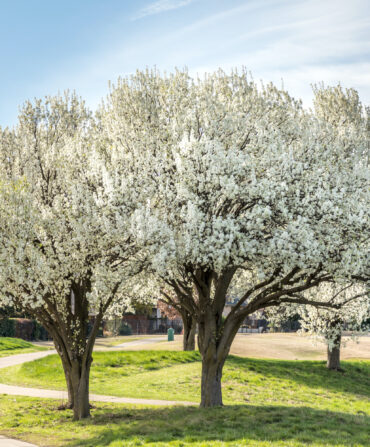There’s always more to know about every Garden & Gun story. In our August/September issue, we visited a conservation-minded Chesapeake estate garden. Here, the owners take us behind the scenes.
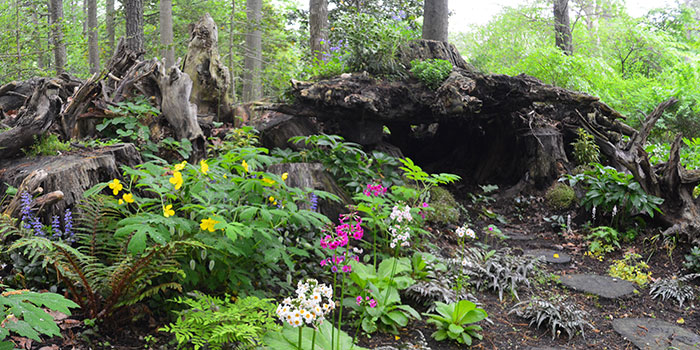
Paul C. Haden
The stumpery. It sounds like Monty Python and looks straight out of the Hobbit, but is in fact simply a garden of tree stumps. Perhaps the most famous example grows on the grounds of Highgrove House in Gloucestershire, United Kingdom, the home of Prince Charles (pictured below).
That garden was the inspiration for a Southern version at Harleigh, a private estate near Oxford, Maryland. After a 2010 visit to Highgrove, owners Chip Akridge and his wife, Sally, learned about the origins of these wild European gardens. First created from scraps of wood that were piled to manage livestock, the ragged fences became unplanned gardens when they sprouted ferns and wildflowers sown by bird droppings. Prince Charles’s fantastical garden of uprooted chestnut trees motivated the couple to create a stumpery on their own property.
For the past five years, Chip has collected roots from his estate and nearby landscaping projects. “We had to piece together our source of stumps. If a tree died on my property, I could pull out the roots,” he says. “Then I started looking around the county and finding construction projects. People couldn’t believe we would come and haul away the stumps for nothing.”
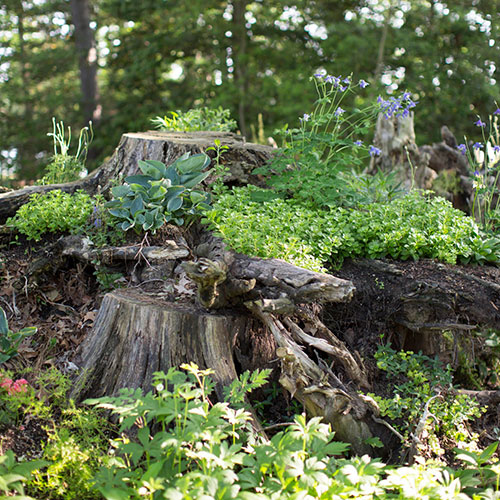
Patricia Lyons
Once he had assembled a small gathering of stumps, Chip seeded native vegetation, all with the aim of creating an untamed-looking garden. “It takes a few years for the plants to establish themselves and look like the stumpery has been there forever,” he says.
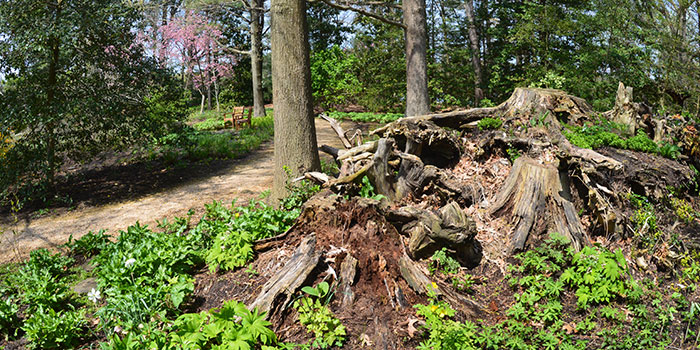
Paul C. Haden
The evolving landscape sits between the house and the Chesapeake Bay. “Hidden around two bends in the path,” Chip describes, “Tucked underneath large shade trees, you come around the curve and find something you didn’t expect.”
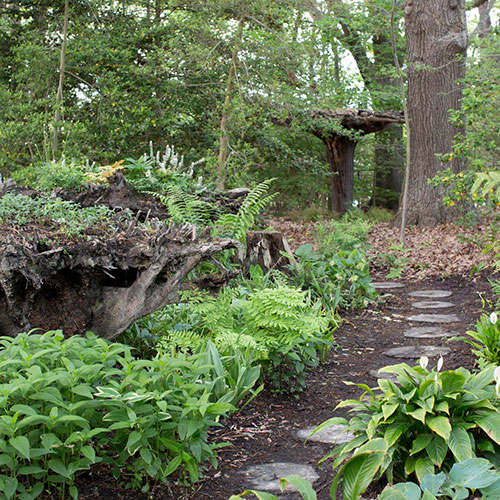
Patricia Lyons
Pine, oak, and maple stumps are upturned with roots mingling. A potpourri of ferns and flowers are sprinkled throughout—lily of the valley, columbine, hellebore, primrose, and trout lily. In addition to stumps, Chip collects tree knots for what he calls the “knoterie,” an extension of the stump garden.
As for comparisons to the Shire of Middle-Earth? Chip is not surprised. In fact, he built what he calls a “troll cave” through the middle of a clump of roots.
“It was a hobbit-like place. But it collapsed,” he says, adding that the stumpery is constantly changing shape. “The whole garden is a living being.”
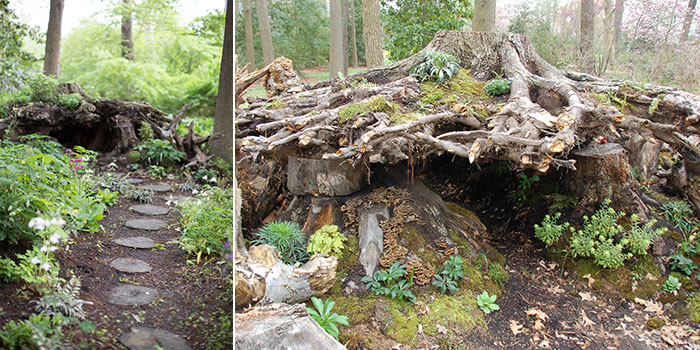
Paul C. Haden



